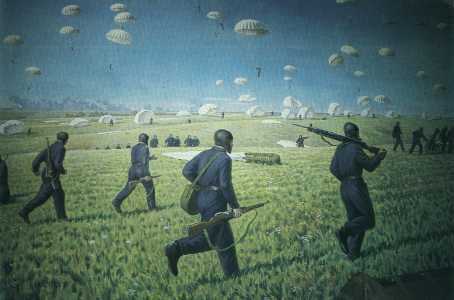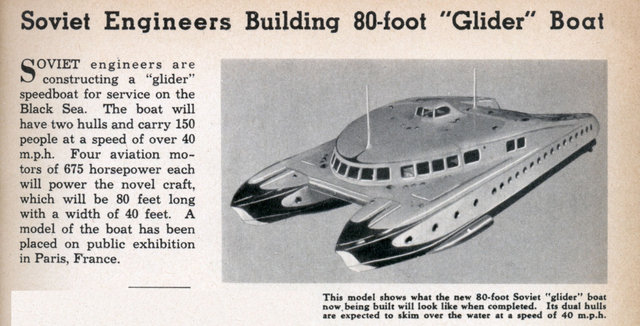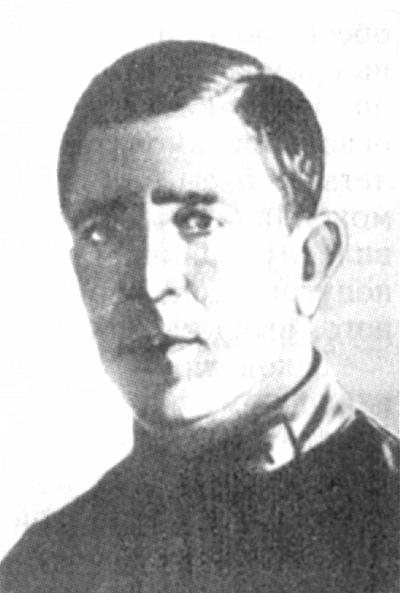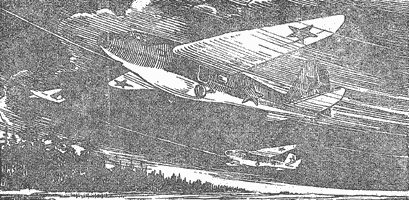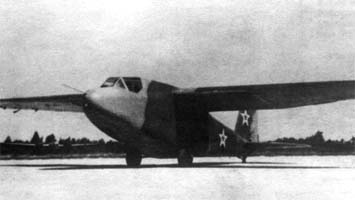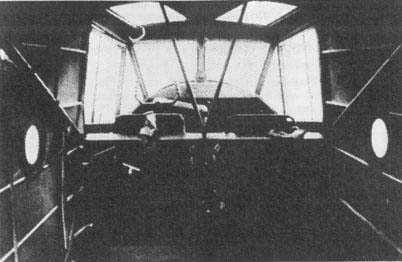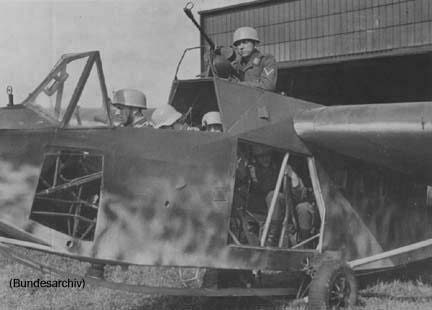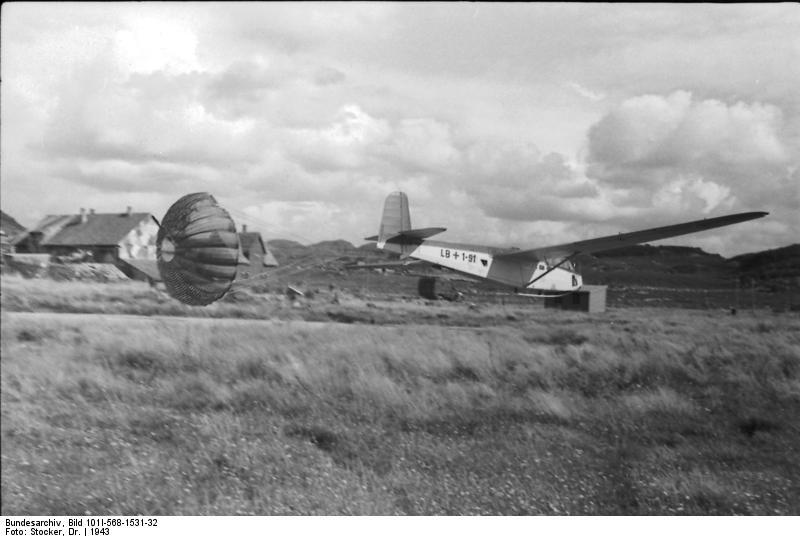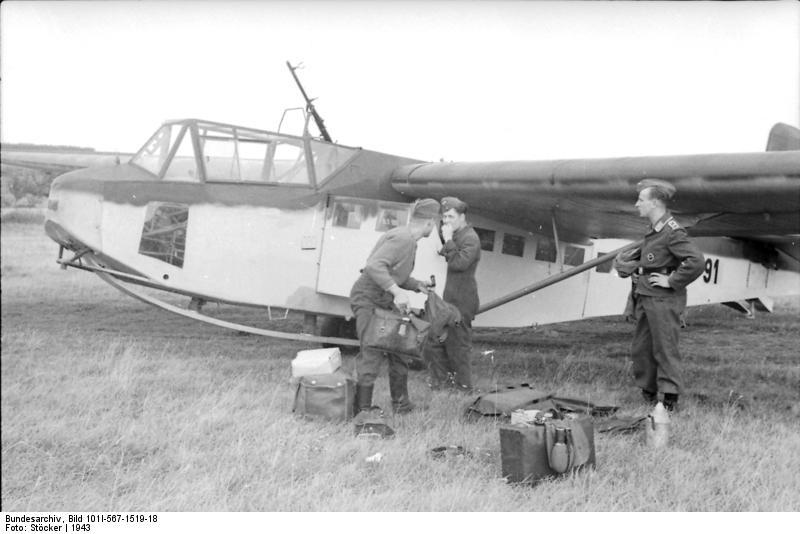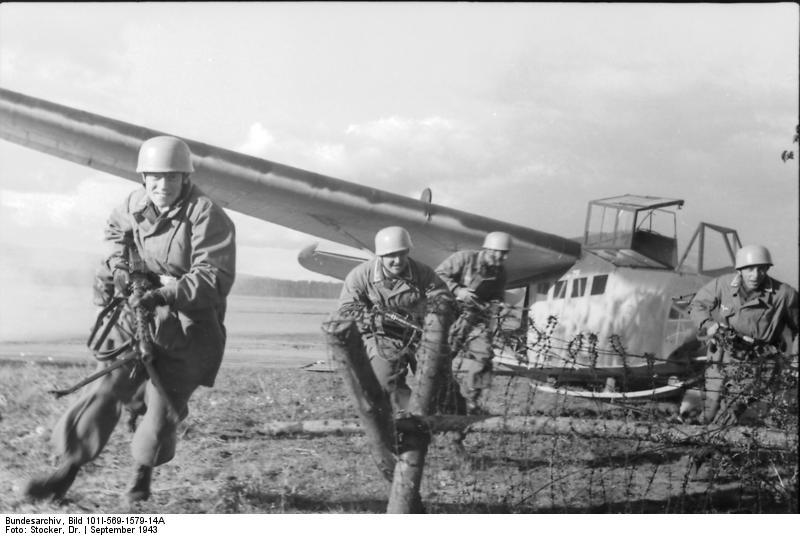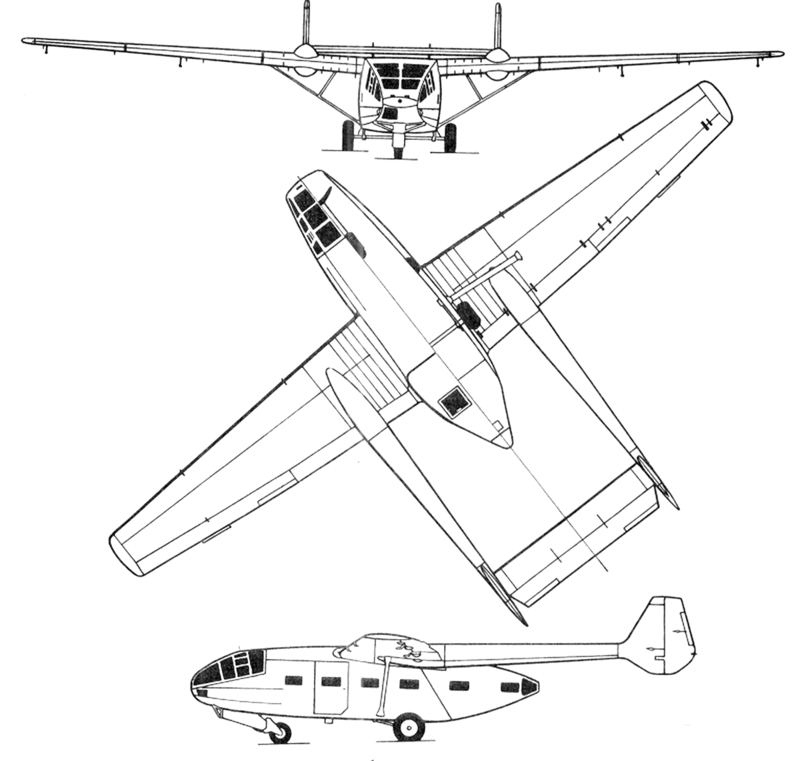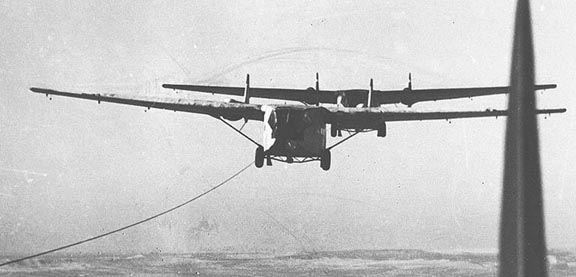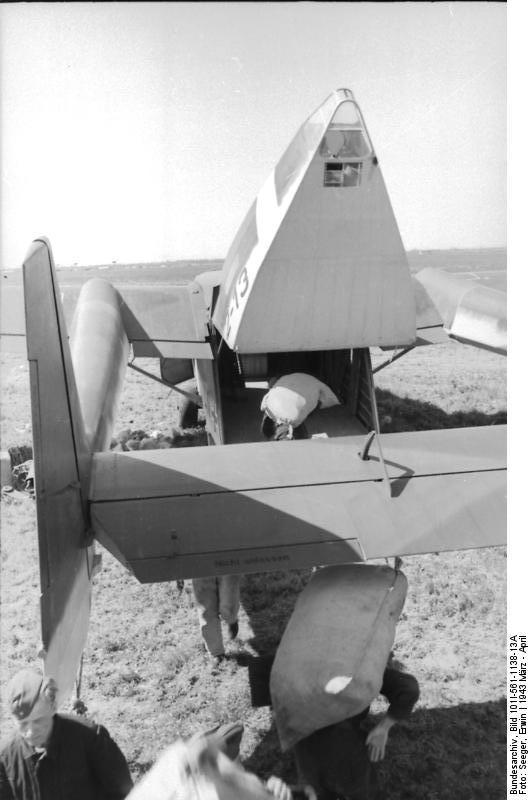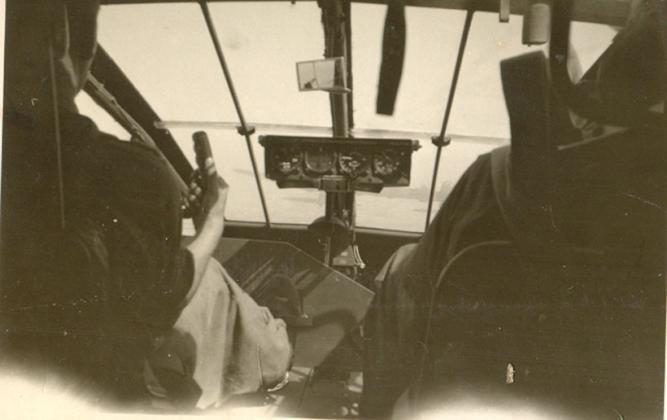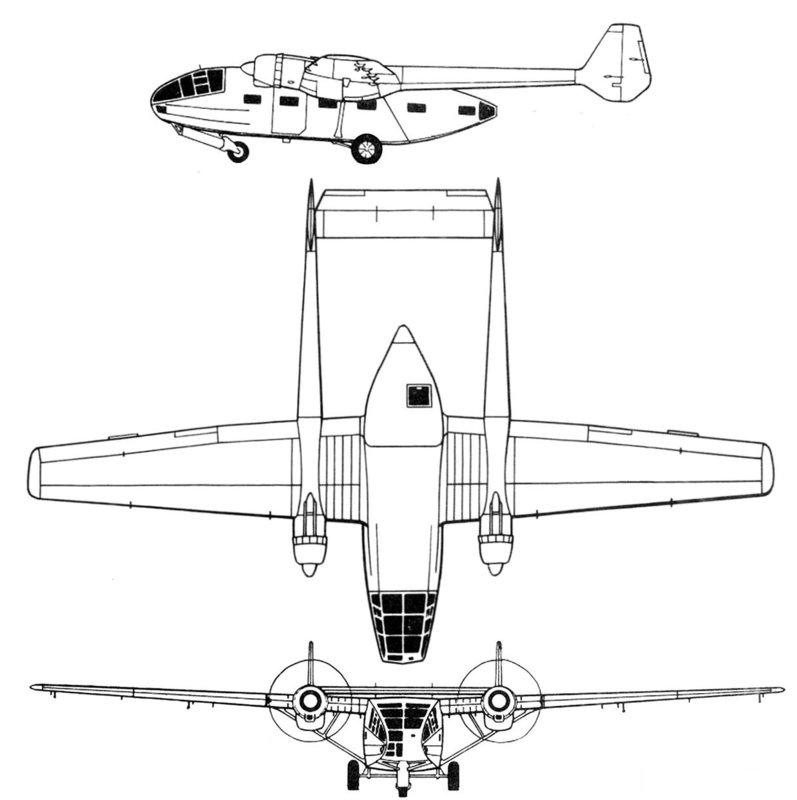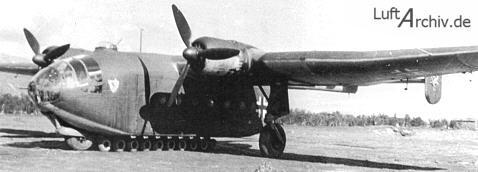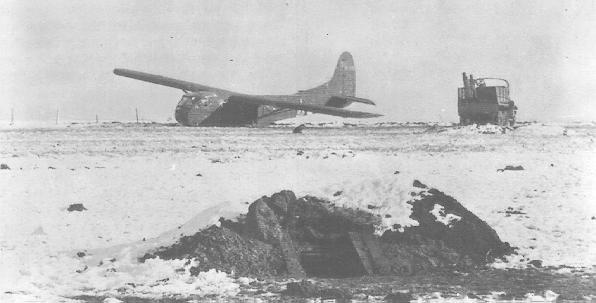Besides combat aircraft purchases and construction, there were other Programs that were taking place under the aegis of the Ilmavoimat: one of the major such programs that that concerning Finnish Army Gliders and Assault Transport aircraft.
While it was not publicized and the initiative was kept well concealed, the Maavoimat had over the later 1930’s built up an entire Paratroop Division – the Parajaegers. This was a sizable force which grew from an initial (and experimental) Company into a Battalion sized force, then into to a Regimental Battle Group and finally into a Divisional sized force over the five years from 1935 to late 1939. We will cover this in detail when we look at the ongoing evolution of the Maavoimat through the 1930’s. Suffice it to say that, both inspired by and fearful of developments in the USSR, the Finnish military strove to emulate the military innovations of their neighbors in many ways and in doing so, often far exceeded what the USSR’s military achieved. In both the formation of paratroop units and in their use, the Finns did exactly this. However, unlike the Soviets, the Finns labored under serious and ongoing resource constraints and this led them to constantly experiment and innovate in a desire to achieve much with less.
In 1935, as part of the Kiev maneuvers, the Soviets demonstrated to the world the air movement of a Division from Moscow to Vladivostok. The 14,000 troops and their equipment were airlanded following the seizure of the airfield by over 1,000 Airborne troops. Subsequent maneuvers, from 1935 to 1937, verified both the utility of the Airborne forces and the doctrinal concepts for their use. The Moscow exercise of 1936 involved the airdrop of over 5,000 Airborne troops to secure an airfield with the follow-on airlanding of the 84th Rifle Division.
These Soviet innovations were a constant concern to the Finns, who established the Pääesikunnan Teknillinen Tutkimusyksikkö (Technical Research Unit of the General Staff) specifically to identify and assess Soviet progress and examine possible counters. We have seen earlier how the Finns developed the radically new ground-effect / hovercraft concept – partially in response to such Soviet developments as the “glider” boat below, and partially in an innovative attempt to use technology to gain a military “edge.” The development of the Finnish Parajaeger units was another such response, and as we will see, there were more such responses.
The use of Gliders was another such example. In 1932 the Soviet Union demonstrated the TsK Komsula, a four-place glider, designed by GF Groschev that could also be used for cargo. By 1934, when gliding was only just starting to develop and become popular as a sport in Finland, the Soviet Union had ten gliding schools and 57,000 glider pilots had gained licences. Larger gliders were then developed culminating in an 18-seater designed and built at the military institute in Leningrad in 1935. The G63 Project started at the beginning of 1932 and in September the glider was transported to Gatchina for trials. Even disassembled, its size was 6m x 12m, creating complications and delays during transport. The trials ended with the glider crashing.
Vladimir Konstantinovich Gribovskij was a Soviet Military Pilot who built 17 gliders and 20 aircraft over the period 1925 to 1942. Practically every one of his constructions was a success, some of his gliders were built in large series. His small team included V.V. Abramov, B.K. Landyshev and a few others. The construction of his aircraft (practically 100% wood) was extremely simple, because he had no ‘high-tech’ production base. As a result, his aircraft were not record-setters in terms of weight and efficiency, they were very robust and undemanding for repair depots. Gribovskij’s key concept was “the Flying Public”. He pushed the idea of sports aviation, available for everyone willing and interested in flying. This idea was not be shared by the Soviet leadership.
The glider to the right isn’t the G-63, though it is a Gribovsky: this is the G11 glider the Russians built in 1941 after seeing the Maavoimat glider assault units in action (it was initially designated the G-29 but this was changed to G-11 when it was accepted for production).
And this next on the right is the Gribovsky G29 glider, a high-wing, all-wooden construction, plywood covered transport glider. The fuselage was rectangular in cross-section, with a single-seat pilots position at the front, with an upwards opening canopy. A transport compartment could carry 10 men. There were two doors, one on each side of the fuselage and also two small rectangular windows on each side. Troops sat on folding benches along the sides. Landing gear was fixed, but it could be folded up manually by the pilot in order to shorten the landing distance in which case the glider landed on a skid under the fuselage. Maximum towing speed was 173 mph.
However, unknown to the Finns, while the Soviets experimented, no gliders saw large scale production development. Luftwaffe Colonel Kurt Student visited Moscow as part of the military collaboration program with the Soviet Union. He reported back to his superiors in Berlin details of a 1,500 man parachute drop and the large transport gliders that he had seen and this report found its way to the Pääesikunnan Teknillinen Tutkimusyksikkö (Technical Research Unit of the Finnish General Staff). This 1935 report as well as the widely publicized Kiev maneuvers were partially responsible for the founding of the Suomen Maavoimat’s Experimental Parajaeger Battalion in the same year.
As we have seen, the Ilmavoimat purchased a number of transport aircraft over the years, one of the uses for which evolved into the para-dropping of troops. Again, we will address doctrine for paratroops when we look at the Maavoimat, suffice it to say that as the ParaJaeger units grew in size, the Maavoimat anticipated that there would come a point where the number of aircraft available was insufficient to drop enough men simultaneously. Aware of the Soviet military use of Gliders, the Maavoimat began research into the subject in early 1935, working with the Ilmavoimat. In this, they were aided by the rapid development of civilian sport gliding in Finland. In an earlier Post, we looked at the development of civilian gliding in Finland in the 1930’s and saw that even by the mid-1930’s, there were a large number of trained and experienced glider pilots as well as a small factory, Jämijärvi Wood and Metal Ltd, designing and manufacturing gliders.
In late 1935, the Maavoimat gave Jämijärvi Wood and Metal Ltd a contract to design and build a prototype military glider capable of carrying ten to fifteen soldiers with full equipment or a total payload of about 1,200-1,500 kg. Finnish gliding clubs had strong ties with the German gliding clubs from the start – it was German Gliders and glider pilots that started the interest in gliding in Finland – and after being awarded the contract, Jämijärvi Wood and Metal Ltd visited their gliding associates in the Deutsche Forschungsanstalt für Segelflug (DFS – “German Research Institute for Sailplane Flight”) and asked for their help. Hans Jacob, the Head Designer at DFS, was quick to respond. In 1933, Jacob had designed what would go on to become the DFS-230 transport glider for the German military – in 1935 this design had not yet been built (OTL, the first prototype was flown in Germany in 1937) and Jacob, seeing an opportunity to use the Finns to trial the design and iron out any initial problems, made the design available and volunteered to return to Finland and assist Jämijärvi Wood and Metal Ltd in building and testing a prototype.
Over January and February 1936 a prototype was built and then tested in the spring. The structural design was thoroughly conventional. The wing comprised a single main spar at approximately one-third chord with plywood covering forward and fabric the rest while the long-span ailerons with inset tabs were fabric covered. The wing was braced to the fuselage at quarter-span by light struts. The fuselage was rectangular with a welded steel-tube frame covered with fabric and built up on a central keel member with the impact of landing transmitted to a sprung steel skid. A large loading door was provided at the rear of the cabin in the fuselage portside, and the loading of bulky items of freight was facilitated by a detachable panel beneath the wing in the starboard side of the fuselage. For take-off a two-wheel dolly was provided, this being jettisoned once the glider was airborne. The prototype performed well, some improvements were made and a further two prototypes were built and tested progressively over the remainder of Spring and Summer 1936. Major modifications made consisted of strengthening the structure, installing dual controls and adding a parachute for assistance with braking on landing. Early trials revealed gliding angle of 1:18 in fully loaded condition.
The JWM-100 flew with a Crew of 2 (Pilot and Co-Pilot, and could carry an additional ten fully equipped troops. Length was 37 feet, Wingspan was 69ft 1in, Height was 9ft 4in and maximum speed was 100mph. Free Glide Sink Rate was 240ft/mon and best glide ration was 1:18 (all when fully loaded).
(All photographs below taken from the personal records of Hans Jacob from DFS (as stored by the Bundesarchives) as he assisted the Jämijärvi Wood and Metal Ltd with the design, construction and testing of their prototypes).
May 23, 1937: Exercise Kotka
“Releasing tow cable,” the glider pilot reported. He yanked on the release handle and Kapteeni Erkki Tervamaki felt the difference immediately as the Douglas DC2 climbed away from the release point, and the Tampere-built JMW-100 took up its business of… well, not falling out of the sky. Tervamaki glanced out the window at the horizon. Though the morning was cloudy and gray, it was light enough and the weather calm enough to ensure the assault landing went smoothly.
“Everything all right?” Tervamaki asked the pilot.
“Yes,” the pilot replied, tapping his spartan control board. “On time, on target, on a good bit of air.”
Tervamaki nodded. Eversti (Colonel) Paavo Talvela had given him the opportunity to take his Number Three Company and “prove” to the General Staff that their money was being invested wisely. Many in the General Staff always questioned the wisdom of the ParaJaeger Battalion; Talvela had determined to show them what they could do. Of course, if Tervamaki or his men screwed up, they’d look rather idiotic in front of an imposing collective of Army brass.
“Three minutes,” the glider pilot finally reported. “Beginning approach.”
Tervamaki turned back to the men in the back of the glider. “All right lads, we’re coming in. Check your weapons and brace yourselves for landing.” Tervamaki fitted words to action and checked over his own gun, a Suomi SMG, and his Lahti pistol. The pilot signaled and brought the JMW-100’s nose up for landing. The glider crashed through some bushes and then mushed down, skidding to a stop in the brush. Tervamaki jerked in the restraints as they landed – not bad, they hadn’t crashed and everyone was still in one piece, he decided – and then unstrapped.
“Everyone okay?” he demanded. “Right, let’s go!”
Tervamaki was the first out the door, and went to a crouching fire-covering position, bringing the Suomi up to his shoulder. “No targets!” he announced. The rest of the squad spilled out of the glider behind him even as the trailing three JMW-100’s skidded to a halt, perfectly on target. Tervamaki and the command squad spread out and then, as all four ryhmä leaders signaled their readiness, Tervamaki waved them forward. Their target was a small farmhouse with several outbuildings, a horse paddock, and three staff cars parked by the porch. The ParaJaegers broke into a sprint as they crossed the grass, the first alarmed shouts reaching their ears. On the picket post, two sleepy MPs stumbled out of their chairs as forty well-armed parajaegers in green-brown face paint, the new para helmets and the new summer-pattern camouflage jackets overran their position. Tervamaki himself crashed through a window in a spray of broken wood and shattered glass while the three men that had been assigned to the front door charged up the front steps of the farmhouse bellowing “Hakkaa päälle!” at the top of their lungs as they burst through the door.
A dozen senior officers from GHQ were still sitting around the breakfast table when Tervamaki crashed through the window and covered them with his SMG. “Sirs!” he shouted out. “The farmhouse is mine. You are the prisoners of the Para Jaegers!”
Marshal Mannerheim, the commander of all Finland’s military forces, sitting at the opposite side of the table to Tervamaki, continued to sip at his coffee, his expression unchanged with the exception of one raised eyebrow as he looked at Eversti Paavo Talvela. “You ordered them in an hour early?” Talvela grinned. “I believe you were looking for a demonstration of the capabilities of my men and techniques? This is my demonstration, Sir. Surprise. Speed. Shock! Arrive before we’re expected, with the firepower to win and the shock to clear the way! You can imagine what they could do if they actually wanted to cause damage.”
“If they wanted to cause damage?” Kenraali Erik Heinrichs growled. “What about the damage to my breakfast?!” The other officers roared with laughter, and Tervamaki relaxed a little. “With the generals’ permissions, I’ll be seeing to my men.”
“We’ll be around to inspect them in a few minutes, Kapteeni,” the Marski said. “Damn fine work, boy, damn fine work.”
The JMW-200 Glider
One of the early observations made as the first Parajaeger exercises were completed, results assessed and doctrine developed was that while men could easily be dropped by parachute or landed with light gliders such as the new JMW-100, the Parajaegers lacked the necessary heavy equipment to resist any concentrated enemy counterattack supported by armored vehicles. The recommendation that emerged towards the end of summer 1937 was that thus deficiency be corrected by developing a larger glider capable of carrying heavy loads – anti-tank guns, anti-aircraft guns and light artillery – and perhaps small vehicles – into combat alongside smaller man-carrying gliders and parachutists. The requirement that was expressed was for a glider cable of carrying some 20-30 fully laden troops or a Bofors 37mm anti-tank gun or the new 20mm AA Gun that was being introduced (each of which weighed in the region of 1,000lbs). Ideally, the glider should be capable of carrying the gun, the crew and a useful amount of ammunition (at 2kg per shell). In 1938, this vision of “heavy drop” capability would be turned into reality with the introduction of the JMW-200.
Once again, the small design team from Jämijärvi Wood and Metal Ltd visited their gliding associates in the Deutsche Forschungsanstalt für Segelflug (DFS – “German Research Institute for Sailplane Flight”) and asked for further help. They had an inkling of what was needed, but an actualisation of the concept eluded them. Once more, Hans Jacob, the lead designer of DFS, was of immense assistance. And in fact, with eth Germans now building and testing their own assault gliders based on the Finnish JMW-100, their was a real interest in what the Finnish Parajaegers were up to. General Karl Student was brought in to the early working sessions, as was Albert Kalkert, a designer from Gotha Waggonfabrik. Within four weeks, a design had emerged and once more, a DFS designer accompanied the Jämijärvi Wood and Metal Ltd designers back to Finland to assist with building and testing the prototype.
The end result was the JMW-200 series Gliders. The length was 51 feet 10 inches, wingspan was some 80 feet and height was 14 feet 5 inches. Carrying capacity was 5,600lbs or up to 21 fully equipped troops and two pilots (23 in all), with light armour fitted to the pilots seats. The Glider itself was a high wing monoplane with a simple square section box-shaped fuselage formed of steel tubing covered with doped fabric and ending in a rear loading ramp rather than the side-fitted doors that had always been used hitherto. The use of a ramp would allow cargo to be rolled on and off quickly. The rear door was 7 feet wide by 6 feet high and the cargo space was 20 feet long by 8 feet wide by 6ft 6in in height. To allow easy and quick use of the rear doors and ramp, the tail was fitted to twin booms. Maximum towing speed was 149mph and maximum gliding speed was 180mph.
Two prototypes were rapidly built in the autumn of 1938 – the experience with the JMW-100 and the now rather larger facilities and personnel numbers of the Jämijärvi Wood and Metal Ltd facilities near Tampere allowed for fast construction – and the prototypes were tested before the snow started to fall. Flying characteristics proved to be excellent – even better than the JMW-100 and the test pilots found the glider could be flow with ease in tows or independently. Steep turns were possible, although when fully loaded it was advised that these should be avoided.
Following successful testing over late 1938, the Maavoimat contracted for 25 JMW-200’s in November 1938. However, as the Parajaegers were expanded rapidly through 1938 and 1939 (to three Regimental Combat Groups combined into a Division for administrative purposes) the order was continually expanded, with Jämijärvi Wood and Metal Ltd having to expand their facilities and hire additional workers to meet the increased demand.
The next step was taken in early 1939 as the Parajaegers expressed a need for gliders that could more easily be returned to their bases after use. This was achieved by the “simple” expedient of fitting two engines to the JMW-200.
The JMW-210 Assault Transport Aircraft
The resultant prototype was designated the JMW-210 and utilised two Bristol Mercury 8100hp engines manufactured under license in Finland for the Bristol Blenheim program. The resultant aircraft had a maximum speed of 180mph and a range of 500 miles with a service ceiling of 27,000 feet (and with payload reduced by some 1,000lbs). The engines were fitted by the simple expedient of fitting them to the front of the booms with some straightforward design changes made to strengthen the wing and boom. A wheeled tricycle undercarriage was fitted, with fuel and oil carried in the booms. Again, some assistance from Deutsche Forschungsanstalt für Segelflug (DFS) was asked for – and the concrete result was the incorporation of a “travelling flap” for the entire rear surface of the wing which meant that, even fully loaded, the JMW-210 could take off in as little as 656 feet. A further design modification was the addition of a row of 11 smaller wheels per side to further support the aircraft when landing on soft or rough airfields or on combat assaults into non-prepared terrain. The JMW-210 normally had a crew of 3 – Pilot, Co-pilot/Navigator and Loadmaster.
The first two prototypes were constructed in spring 1939 and tested over Spring and early Summer. Results were satisfactory and with tension building with the USSR, an immediate order was placed to build as many of the aircraft as possible. The Bristol Mercury engine line was still running, a stockpile of engines existed and these were fitted to a number of JMW-200’s already being built. The end result was that the Ilmavoimat had 17 of these aircraft in service by November 1939 with more being constructed as rapidly as possible. On the outbreak of the Winter War, a number of existing in-service JMW-200 Gliders were returned to the Jämijärvi Wood and Metal Ltd plant for modification work – this resulted in some 23 further JMW-210’s being brought into service by March 1940.
Photo, left: Production version of the JMW-210 with additional small wheels fitted down the sides of the fuselage. The design introduced almost all of the features now considered to be “standard” for modern transport aircraft, including a low-slung box-like fuselage, rear loading ramp, a tail design that allowed for easy access to the hold, and various features for operating from rough fields. Later production aircraft saw further strengthening to the fuselage structure to reduce damage when carrying out assault landings on rough terrain.
The 40-odd JMW-210’s together with numerous JMW-200 and JMW-100 Gliders were first used in combat by the Parajaeger Division in the the dramatic capture of Murmansk in February 1940 when the entire Finnish Parajaeger Division dropped in to “visit the neighbors” (the operation was, with a certain amount of dry humor, called “Naapurin Ystävät” – Neighborhood Friends) as part of an attack from the sea (where the Finnish Marines landed), from the air and overland from Petsamo, where the attacking Red Army units had been virtually annihilated. The attack itself was not covered by foreign correspondents – they were only brought in “after the fact” and when much of the evidence of an airborne landing had been cleaned up – the Maavoimat wished to keep the successful use of the Parajaegers in the operation secret, and this they managed to do. So far as is known even today, only one photo of a Finnish Glider at Murmansk is in existence.
Photo, Left: Finnish Parajaeger Division Glider – Murmansk Campaign, February 1940: as far is is known this is the only photo in existence of this almost unknown use of Gliders in a combat operation – only one of many instances where the innovative tactics and equipment of the Maavoimat led to military success in the Winter War.
They were next used in the Spring Offensive on the Karelian Isthmus in early 1940, just a little before the German Army did so in May of the same year. While the German Army’s use of gliders received widespread attention, the Finnish military’s usage did not for a combination of two reasons. The first was that by the time of the Spring Offensive on the Karelian Isthmus, the Battle of France was underway and the attention of the world press had moved way from Finland and was now focused on the dramatic events taking place in Belgium and France. The second reason was that at the time, the Finns had very strict limitations on the movements of foreign war correspondents and thus many details of the Spring Offensive were neither reported nor noted and were only documented in depth after the War had ended – and then generally only in Finnish, which somewhat limited the audience.
The Finnish Army would go on to use Gliders and Assault Transport Aircraft throughout World War Two, examples being E-Day (the invasion of Estonia in Spring 1944), the Relief of Warsaw and ongoing use to support the Polish Home Army and in assaults on German defences as the Finnish and Allied Armies moved through northern Poland and into Germany. The innovative Finnish JMW-210 Assault Transport Aircraft would be built and used in large numbers between 1940 and 1948, with the aircraft also being sold to Sweden and to the Polish Army.
 Copyright secured by Digiprove © 2013 Alternative Finland
Copyright secured by Digiprove © 2013 Alternative Finland


